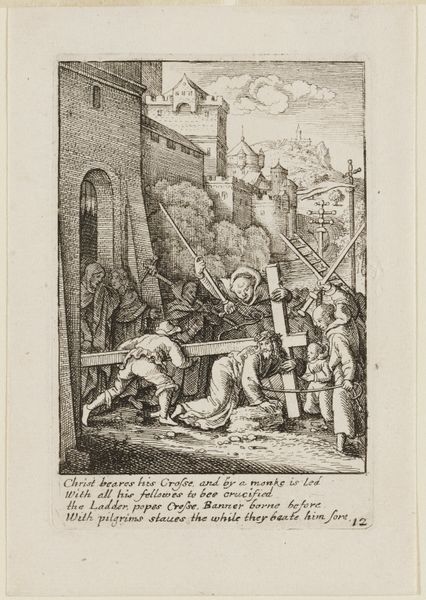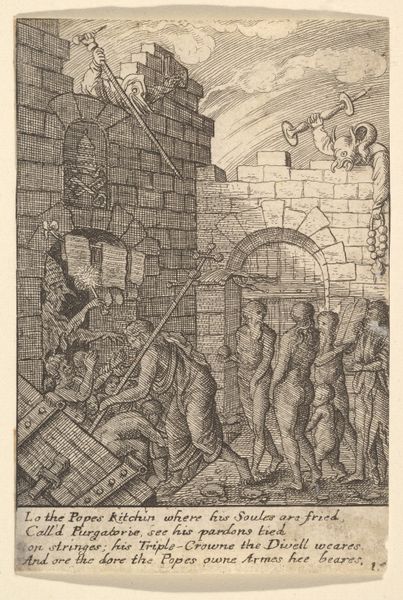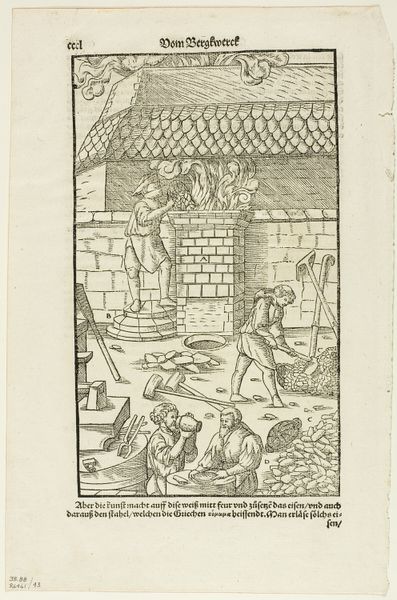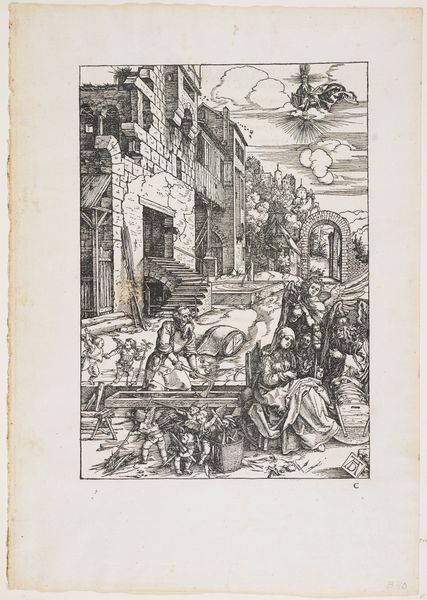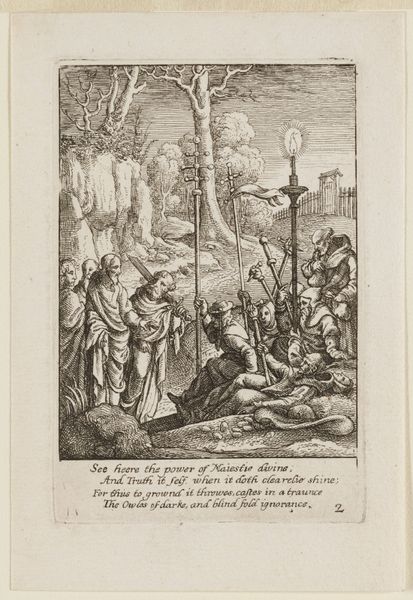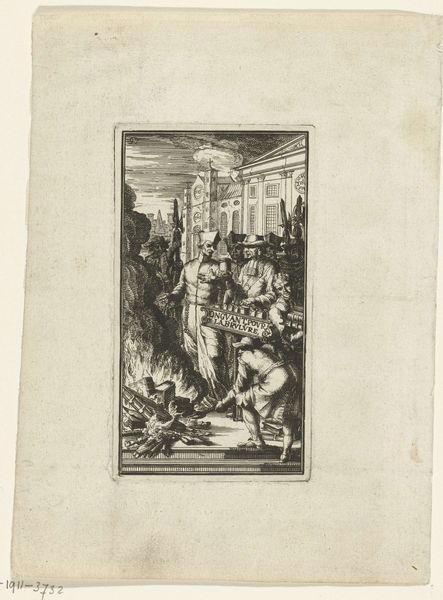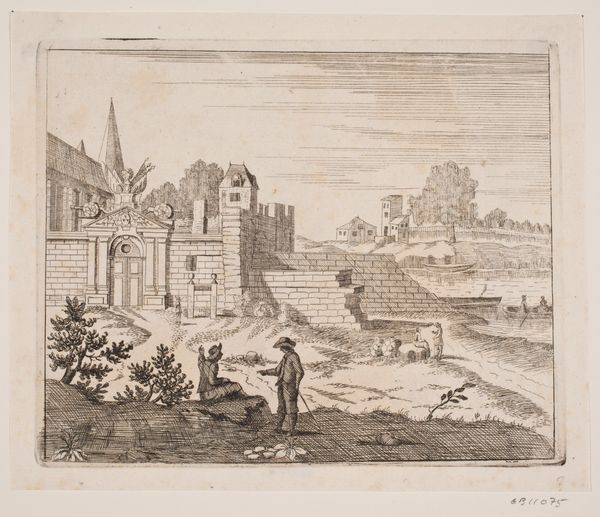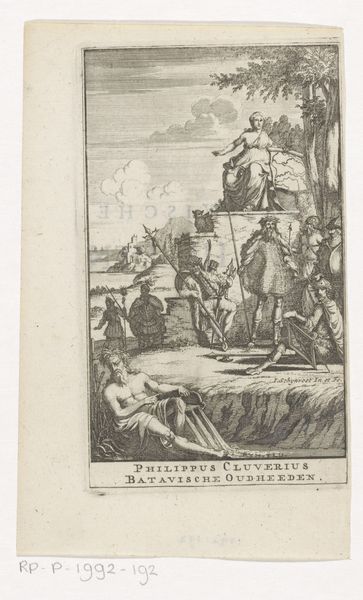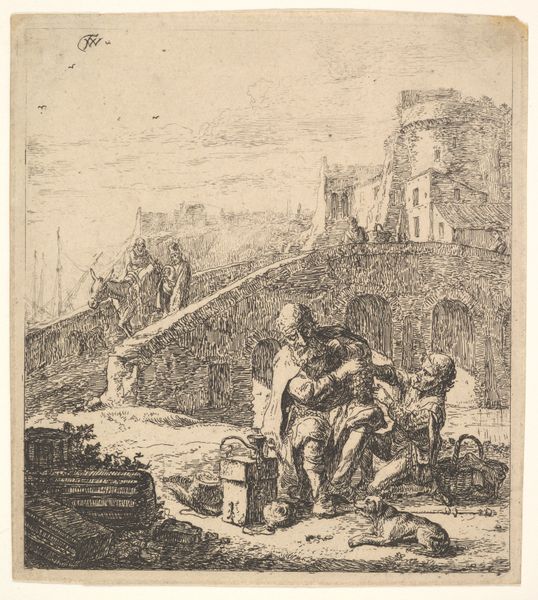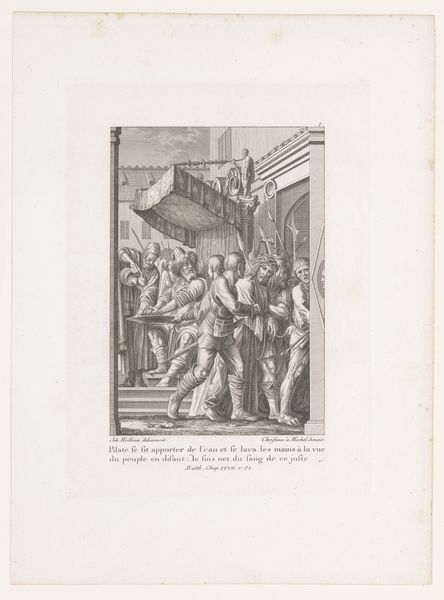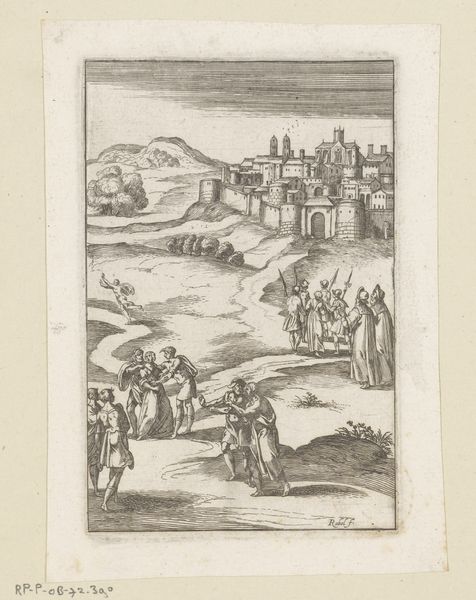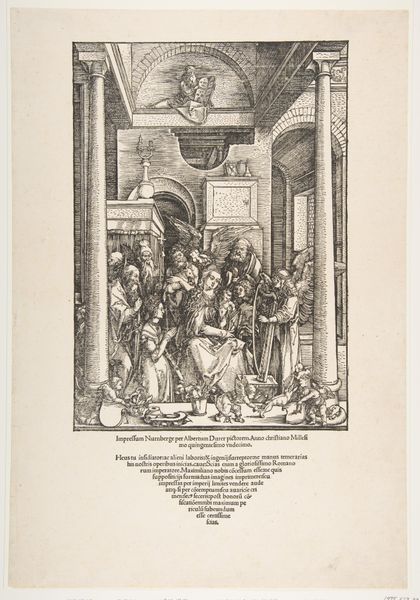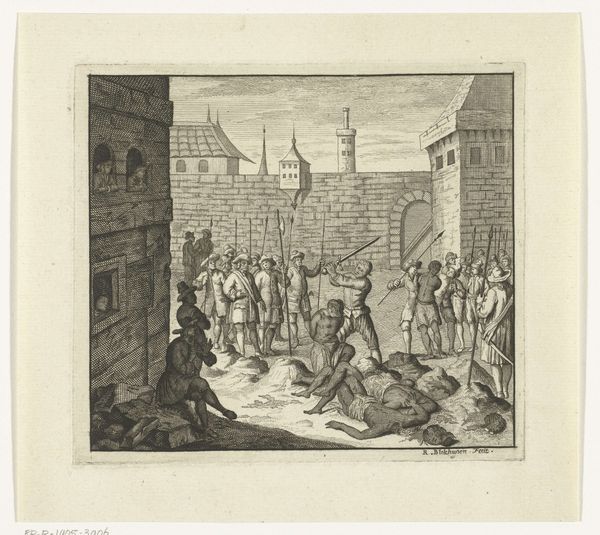
print, etching, engraving
#
baroque
# print
#
etching
#
figuration
#
history-painting
#
engraving
Dimensions: 3 5/8 × 2 1/2 in. (9.21 × 6.35 cm) (image)4 5/8 × 3 3/16 in. (11.75 × 8.1 cm) (sheet)
Copyright: Public Domain
Curator: This is Wenceslaus Hollar's "Christ's Descent into Hell," created sometime between 1642 and 1654. It’s an etching and engraving, currently housed here at the Minneapolis Institute of Art. Editor: It strikes me immediately as quite unsettling. The sharp lines and the stark contrast really emphasize the chaotic scene depicted. It feels like a descent into madness as much as anything else. Curator: Hollar was working during a period of intense religious and political upheaval, particularly the Thirty Years’ War. Prints like this were often used as propaganda, spreading specific political and religious viewpoints to a wider audience. This piece critiques the Catholic Church and the concept of Purgatory, showing a rather unflattering depiction of the Pope’s domain. Editor: The composition is quite clever in its arrangement. Note how the architecture divides the space, with a crumbling, claustrophobic left side contrasted by the open entrance on the right, almost offering an escape. The figures, though small, are rendered with incredible detail. You can sense their anguish, their longing. Curator: Precisely. The text included beneath the image reinforces this critique. It refers to Purgatory as the "Pope’s kitchen where his souls are fried," a space where indulgences are sold, and the Devil wears the Pope’s Triple Crown. The etching is an effort to lampoon papal authority. Editor: What is most remarkable to me is Hollar’s mastery of line. The variations in line weight create depth and shadow, conveying the claustrophobia that, it seems, also reflects the political climate of the era, don't you agree? The hatching technique used on the left is intense. Curator: Absolutely. Hollar utilizes these established printmaking techniques to address topical political issues. His skilled rendering is serving ideological and political arguments. Editor: It really shows how artistic skill, deployed properly, makes social and cultural commentary all the more visceral. I will remember the chaos and detail. Curator: An excellent synthesis. Hollar, indeed, understood the potential of his medium to influence public discourse and sway opinions. A reminder that artwork has long been interwoven in political struggles.
Comments
No comments
Be the first to comment and join the conversation on the ultimate creative platform.
